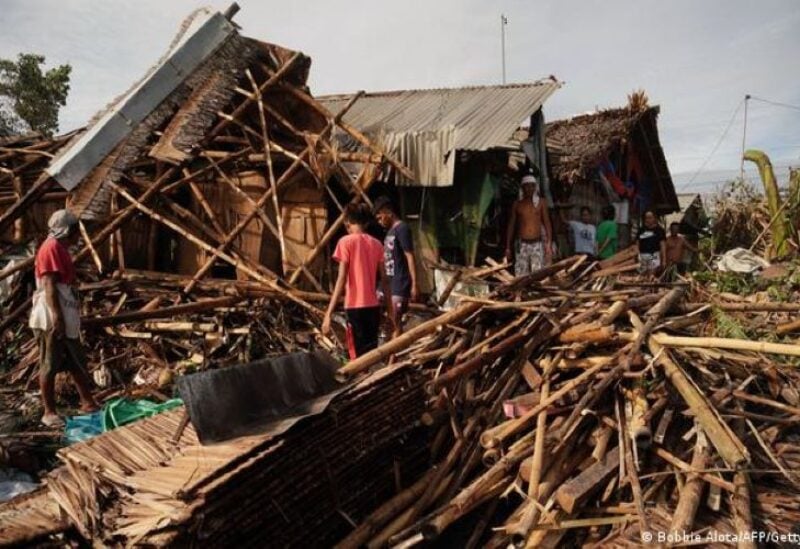
Houses damaged by typhoon Rai
The governor of an island province in the central Philippines said Sunday that at least 63 people died in the damage caused by Typhoon Rai in more than half of the towns that managed to contact him, raising the death toll from the country’s biggest typhoon this year to at least 137.
Gov. Arthur Yap of Bohol province stated 10 others were missing and 13 were injured, adding that the number of deaths might rise further because only 33 of 48 mayors were able to report back to him due to downed communications.
Officials were attempting to confirm a significant number of deaths caused by landslides and widespread floods in other areas.
Yap directed mayors in his 1.2 million-person province to use their emergency powers to procure food and water for huge numbers of people, according to messages posted on Facebook. Both have being sought immediately.
“It is extremely evident that the damage inflicted by Bohol is vast and all-encompassing,” Yap said after accompanying a military overhead inspection of typhoon-ravaged communities.
He said that the original assessment did not include four towns where the hurricane made landfall on Thursday and Friday as it ripped across central island regions. According to the administration, around 780,000 individuals were impacted, including more than 300,000 citizens who were forced to flee their homes.
The disaster-response agency, national police, and municipal officials reported at least 64 other storm deaths. Officials on Dinagat Islands, one of the southeastern provinces most hit by the storm, also reported 10 deaths from a few communities, bringing the total number of fatalities to 137.
On Saturday, President Rodrigo Duterte travelled to the region and pledged 2 billion pesos ($40 million) in relief. He visited with officials at Maasin City, in the province of Southern Leyte, where he was born. Duterte’s family then migrated to Davao, a southern city where he served as mayor for many years before ascending to the presidency.
“From the moment I was born, I told my mother, ‘Let’s not remain here because this location is particularly prone to typhoons,'” Duterte said.
At its peak, the typhoon had sustained winds of 195 kilometers (121 miles) per hour and gusts of up to 270 kilometers per hour (168 miles per hour), making it one of the most powerful storms to hit the disaster-prone archipelago in recent years.
Floodwaters surged quickly at Loboc, a riverbank village on the island of Bohol, trapping inhabitants on their rooftops and in trees. They were rescued the next day by the coast guard. An official in Dinagat Islands stated the roofs of practically all the homes, including emergency shelters, were either damaged or completely blown away.
At least 227 cities and towns lost power, which has since been restored in just 21 places, according to authorities, who also stated that three regional airports were damaged, two of which remain closed.
The deaths and severe destruction caused by the storm ahead of Christmas in the predominantly Roman Catholic country brought up memories of the devastation caused by another typhoon, Haiyan, one of the most ferocious on record. It struck several of the core regions that were devastated last week, killing about 6,300 people in November 2013.